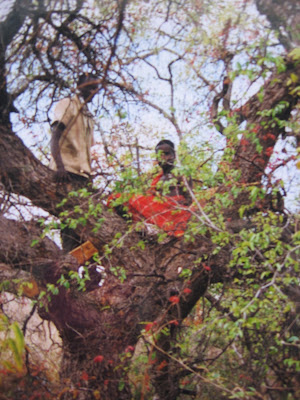 Shall we catch a Tanzanian bus, & go on an exciting journey somewhere together today ?!
Shall we catch a Tanzanian bus, & go on an exciting journey somewhere together today ?! Buses are one of the main modes of transport here for people wishing to travel from one city to the next
Buses are one of the main modes of transport here for people wishing to travel from one city to the next You can catch a bus to Kenya, Zambia, Uganda, Rwanda, Mozambique or Malawi
You can catch a bus to Kenya, Zambia, Uganda, Rwanda, Mozambique or Malawi So .... which city would you like to visit today ?!
So .... which city would you like to visit today ?!On almost all Tanzanian roads, you will find these buses running – especially along the major routes like Dar es Salaam or Arusha to Nairobi, Kenya. They’re bright, shiny and travel at break-neck speed on long, open stretches of road ! (We don't have 'highways' or 'freeways' here). Just ask a friendly local in whichever town or city you happen to be in, where the closest bus depot is - hop on, and enjoy the ride !
Buses are the main means of transport for local Tanzanians to get from one town or city to the next. They are also a popular choice for travellers on a budget, and I know several tourists who have successfully (& safely) travelled around Tanzania on them – and had great fun in the process !
Whenever one of these buses passes slowly through a town, or slows down at an intersection you see lots of vendors running up with boxes of goods for sale for hungry/thirsty passengers. The vendors push the goods up through the windows – shouting their prices out, haggling & running alongside the bus in order to keep up. I’ve watched many an exchange of boiled eggs, bottled water, peanuts, bananas or bread between vendors and bus passengers – a great source of business for the vendors and no doubt a source of entertainment for the travel weary passengers !
As a matter of interest, catching a bus from Dar es Salaam to Nairobi, Kenya would take you around 13 hours and the trip from Arusha to Nairobi would take you around 5 hours (of course these times may vary slightly depending on how long it takes you to get through the Namanga border post which lies between the 2 countries). If you’d like to go to the Kenyan coast, then a coach from Dar es Salaam to Mombasa takes around 12 hours.
You can also travel from Dar es Salaam to Lilongwe (approx. 27 hours) in Malawi, or even to Mozambique, Uganda (this route usually runs from Nairobi via Dar es Salaam to Kampala) or from Kampala, Uganda to Bukoba on the shores of Lake Victoria.
If you’re a traveller reading this, and plan on using one of these bus services sometime in the future, my advice to you would be to take something to eat & drink with you on the bus, along with a small pillow and some reading material. Have your camera handy, too & be prepared to meet, talk & make friends with your fellow travellers – Tanzanians are naturally friendly, welcoming people and you will find that your fellow passengers will be only too happy to tell you more about life in Tanzania, and to point out any interesting landmarks along the way !
Certainly more exciting than catching a 'plane from one city to the next, buses allow you to really get a ‘feel’ for the country and the wonderful Tanzanian people –so sit back, relax …. and enjoy the ride !

















































